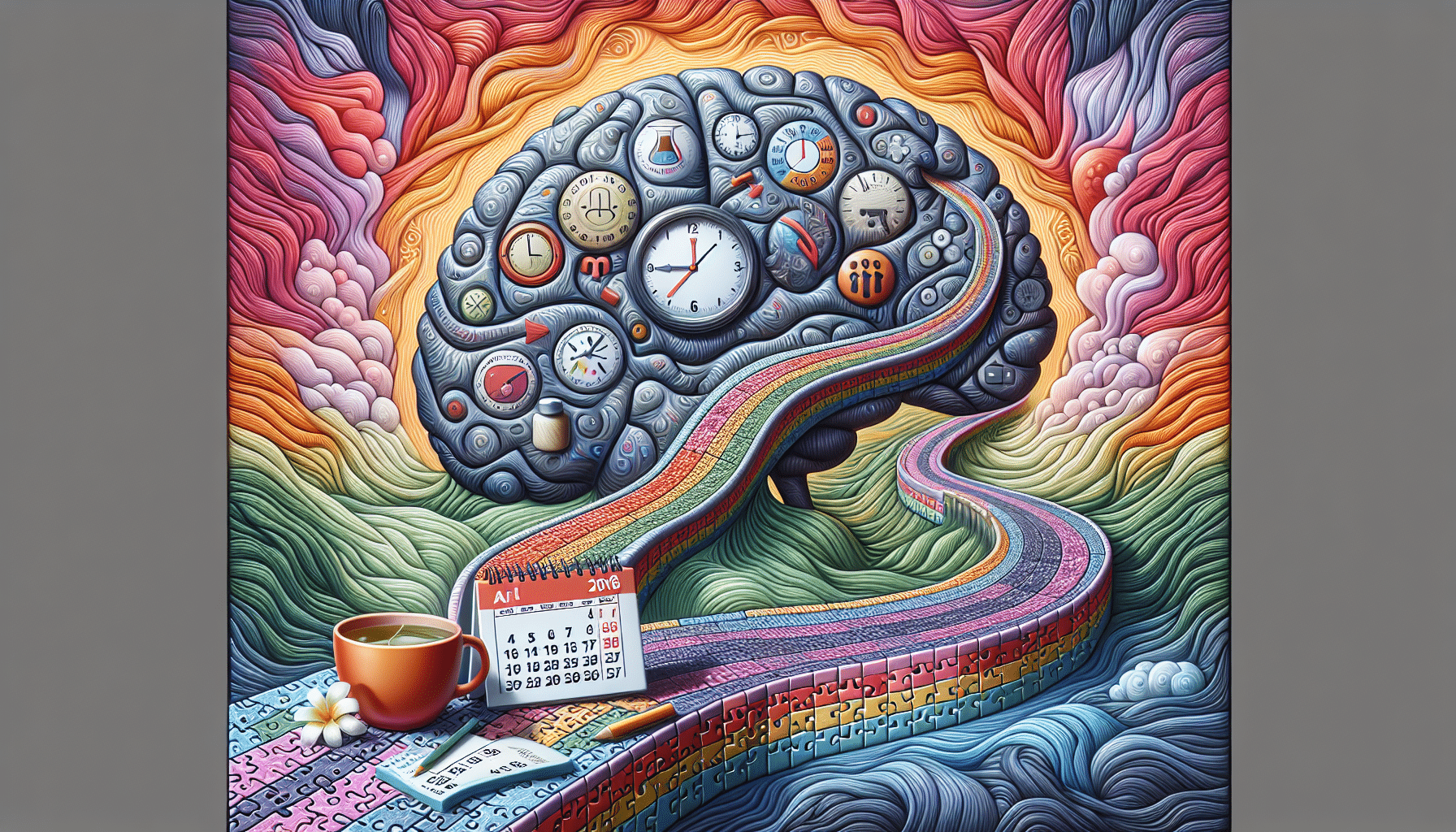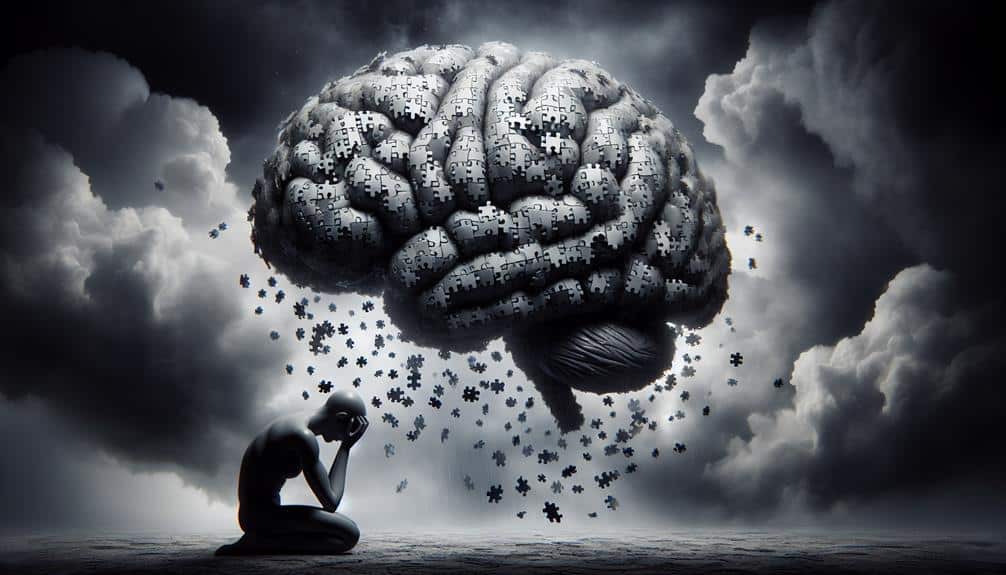Ever wondered why stress affects us all differently? It’s fascinating how some people thrive under pressure while others crumble. But did you know that not all stress is the same?
We encounter different types of stress 12, each with its unique characteristics and impact on our well-being. In this discussion, we will explore these various types of stress, from fleeting moments of acute stress to the prolonged burden of chronic stress.
What are the different types of stress?
Stress is classified into three main types: acute, episodic, and chronic. Acute stress is short-term and often reaction-based. Episodic acute stress frequently occurs in those with a chaotic lifestyle. Chronic stress is long-term and stems from unresolved issues or situations.
This blog is part of a series on “what stress is.” The next blog is about stress hormones and the stress response.
Understanding Types of Stress
- Acute Stress: Short-term responses to immediate pressures or challenges.
- Episodic Acute Stress: Frequent episodes of panic or stress due to a hectic lifestyle or a series of challenges.
- Chronic Stress: Long-lasting stress resulting from enduring issues or seemingly endless situations.
- Physical Stress: The body’s response to physical demands, injuries, or illness.
- Emotional Stress: Stemming from personal relationships, work challenges, or internal conflict.
- Psychological Stress: Related to cognitive perceptions of stress, including anxiety and depression.
Acute Stress
Acute stress is a sudden and intense reaction to a perceived threat or pressure, causing immediate physiological and psychological changes in our bodies. It is a short-term response to a specific event or situation that can physically and emotionally affect us.
When we experience acute stress, our bodies go into a fight-or-flight mode, releasing hormones like adrenaline and cortisol. This response helps us to cope with immediate challenges or threats.
When we encounter acute stress, our heart rate increases, our breathing quickens, and our muscles tense up, ready for action. Various situations, such as a car accident, an unexpected job loss, or a sudden illness can trigger this type of stress.

Understanding the different types of stress, including acute and chronic, can help us navigate and cope with challenging situations more effectively. By recognizing the signs and symptoms of acute stress, we can take appropriate steps to alleviate it.
Whether through deep breathing exercises, engaging in physical activity, or seeking support from loved ones, it’s crucial to prioritize our well-being and find healthy ways to manage stress in our lives.
Acute Stress Examples
Examples of acute stress can range from everyday occurrences to more challenging events. For instance, being stuck in traffic and running late for an important meeting can cause acute stress.
Similarly, receiving a phone call about a loved one’s accident can immediately trigger this type of stress response. These situations demand immediate attention and action, and our bodies respond accordingly. Here are some more examples of acute stress.
| Acute Stress Factors | Description |
|---|---|
| Unexpected Job Loss | Losing a job unexpectedly can cause a sudden and intense stress response. |
| Sudden Financial Emergency | Facing a sudden financial crisis, such as unexpected bills or expenses. |
| Death of a Loved One | Experiencing the death of a family member or close friend can trigger acute stress. |
| Natural Disaster | Being part of or witnessing a natural disaster like an earthquake or flood. |
| Serious Accident | Being involved in or witnessing a serious accident can lead to immediate stress. |
| Major Medical Procedure | Undergoing a major surgery or medical procedure can be a source of acute stress. |
| Public Speaking Event | Having to speak in front of a large audience can induce a strong stress response. |
| Important Job Interview | Attending an important job interview, especially for a highly desired position. |
| Moving to a New Home | The process and adaptation of moving to a new house or city. |
| Serious Argument with a Friend | Having a serious or heated argument with a close friend. |
These are common acute stress examples. Acute stress is one of the most prevalent types and can have immediate but usually temporary effects. It’s the body’s immediate response to a perceived threat or challenge.
It’s important to remember that while acute stress can sometimes be negative, it’s not always harmful. It can often motivate us to solve problems and tackle challenges head-on. Though these examples of acute stress may seem minor, frequent occurrences can lead to more severe types of stress.
Episodic Acute Stress
Now, let’s explore another type of stress that builds upon the intensity of acute stress: episodic acute stress. This type of stress is characterized by experiencing acute stress frequently. People who suffer from episodic acute stress often have a chaotic and overwhelming lifestyle, constantly finding themselves in stressful situations.
Here are some key points to help you understand episodic acute stress:
- Episodic acute stress: Episodic acute stress refers to the recurring pattern of experiencing acute stress. Individuals who experience this type of stress often tend to worry excessively and become anxious about various aspects of their lives.
- Distress examples: Examples of distress caused by episodic acute stress can include constantly feeling overwhelmed, having frequent headaches or migraines, experiencing chronic fatigue, and struggling with sleep disturbances.
- Negative stress: Episodic acute stress is considered a negative form of stress. It can lead to physical and emotional exhaustion, decreased productivity, and strained relationships.
It’s important to remember that acute or episodic stress can be managed effectively with self-care, stress-reducing techniques, and seeking professional help when needed.
Episodic Acute Stress Examples
Episodic Acute Stress often stems from a combination of factors, including personality traits, lifestyle choices, and external stressors. Examples of Episodic Acute Stress include:
| Episodic Acute Stress Factors | Description |
|---|---|
| Financial Stress | Regular worry about debts, bills, and expenses can cause episodic acute stress, especially if financial difficulties are persistent. |
| Health-Related Stress | Dealing with chronic illness, either personally or in a family member, can lead to repeated episodes of acute stress, particularly during periods of exacerbation or medical emergencies. |
| Academic Stress | Students often experience episodic acute stress due to exam pressure, challenging coursework, and deadlines for assignments or projects. |
| Parenting Challenges | Parents may face episodic acute stress due to the demands of childcare, balancing family and work responsibilities, or dealing with behavioral issues in children. |
| Social Stress | Repeated social interactions that are stressful, such as frequent social obligations, public speaking engagements, or social conflicts, can contribute to episodic acute stress. |
| Workplace Conflict | Regular encounters with a difficult boss or coworker, or being in a toxic work environment, can lead to episodes of acute stress. |
| Caring for a Loved One | Providing long-term care for a loved one with special needs or a chronic illness can be a source of ongoing acute stress episodes. |
| Time Management Stress | Consistently feeling like there’s not enough time to accomplish tasks, leading to a perpetual state of rush and pressure. |
| Environmental Stressors | Living in an area with constant noise, pollution, or safety concerns can also contribute to episodic acute stress. |
These examples illustrate how chronic exposure to acute stressors can negatively impact an individual’s well-being.
Chronic Stress
Chronic stress is a prolonged state of emotional and psychological strain that occurs when we’re constantly exposed to stressors over a long period without sufficient time to recover and relax.
Unlike episodic acute stress, characterized by periodic and intense episodes of stress, chronic stress persists over an extended period. Various factors, such as ongoing financial difficulties, long-term job dissatisfaction, or chronic health conditions, can cause this type of stress.
Living with chronic stress can be incredibly challenging and can negatively impact every aspect of a person’s life. It can lead to headaches, digestive issues, and a weakened immune system. Additionally, chronic stress can take a toll on mental health, leading to symptoms of anxiety and depression. Relationships may suffer as well, as chronic stress can make it difficult to engage fully with loved ones and maintain healthy connections.

It is important to recognize the signs of chronic stress and take steps to manage it effectively. Stress-reducing activities like exercise, meditation, and spending time with loved ones can help alleviate its effects. Seeking support from a therapist or counselor can also be beneficial in developing coping strategies and finding a sense of balance. Remember, it’s crucial to prioritize self-care and seek assistance when needed to maintain overall well-being.
Chronic Stress Examples
Unlike episodic acute stress, which is characterized by frequent episodes of acute stress, chronic stress is more about a persistent state of being overwhelmed and pressured without relief. Here are examples of situations that can lead to chronic stress:
| Chronic Stress Factors | Description |
|---|---|
| Long-term Unemployment | The ongoing uncertainty and financial strain of being unemployed for a lengthy period can lead to chronic stress. |
| Persistent Poverty | Living in constant financial hardship and struggling to meet basic needs over an extended period can be a source of chronic stress. |
| Chronic Illness or Pain | Living with a long-term medical condition or chronic pain that doesn’t have a foreseeable end can lead to a continuous state of stress. |
| Enduring Trauma | Experiencing a traumatic event, like abuse or a severe accident, can have long-lasting psychological impacts, leading to chronic stress. |
| Toxic Relationships | Being in a long-term relationship that is consistently negative, whether it’s romantic, familial, or professional, can be a source of chronic stress. |
| Caregiver Stress | Providing long-term care for a family member with severe disabilities or a chronic illness, especially without adequate support, can lead to chronic stress. |
| Chronic Work Overload | A job that consistently requires long hours and high levels of responsibility over many years can lead to chronic stress. |
| Social Isolation or Loneliness | Long-term feelings of loneliness or social isolation, whether due to personal circumstances or external factors like living in a remote area, can cause chronic stress. |
| Prolonged Legal Issues | Ongoing legal battles or involvement in long-term legal disputes can be a continuous source of stress. |
| Living in a High-Crime Area | Constant worry about personal safety and security due to living in a high-crime area can lead to chronic stress. |
Eustress, Good Or Positive Stress
After understanding the detrimental effects of chronic stress, it’s important to shift our focus to a different type of stress known as eustress, often called good or positive stress. Eustress, a term coined by endocrinologist Hans Selye 3, refers to a positive form of stress that can benefit us.
Eustress motivates and energizes us, helping us perform at our best. Thinking of stress as something positive may seem counterintuitive, but it can benefit our overall well-being.
Here are three reasons why eustress can be considered good or positive stress:
- Enhances performance: Eustress can push us to exceed our limits and achieve our goals. It gives us a sense of urgency and excitement, helping us focus and perform better. Whether it’s preparing for an important presentation or competing in a sports event, eustress can stimulate our productivity and drive us towards success.
- Promotes personal growth: Eustress often arises from challenging situations that require us to adapt and learn. It helps us develop new skills, improve problem-solving, and build resilience. We can embrace personal growth and become better equipped to handle future challenges by embracing eustress.
- Increases motivation and engagement: Eustress can ignite our passion and enthusiasm for what we do. It sparks a sense of purpose and fulfillment, making our tasks more enjoyable and meaningful. With eustress, we’re more likely to feel motivated and engaged in our work, leading to greater satisfaction and fulfillment.
While chronic stress can be harmful, eustress can be a positive force in our lives. By recognizing and harnessing the power of eustress, we can experience personal growth, enhanced performance, and increased motivation.
Eustress Examples
Here are some prime examples of this positive type of stress:
- Setting and achieving goals: When we set goals, the journey towards them can be stressful. Yet, this stress pushes us to strive harder and achieve our objectives.
- Physical exercise: Working out puts your body under stress, but it’s a positive stress that enhances physical fitness and overall well-being.
- Weddings: They’re often stressful, but it’s a joyful stress filled with anticipation and happiness.
- Childbirth: Despite the physical pain, the stress of childbirth brings the joy of a new life.
These are just a few instances of how eustress positively impacts our lives.
Distress, Bad Or Negative Stress
Distress, unlike eustress, can have detrimental effects on our mental and physical well-being. It’s the type of stress we often associate with negative experiences and overwhelming feelings. When we experience distress, our bodies and minds react in ways that can harm our overall health.
Negative stress can manifest in various ways, such as constant worry, anxiety, and feelings of hopelessness. It can impact our ability to focus, make decisions, and perform everyday tasks effectively. Distress can also lead to physical symptoms like headaches, muscle tension, and digestive issues.
It is important to remember that distress is a normal part of life, and we all have moments when we feel overwhelmed. Acknowledging this can create a supportive environment where individuals feel comfortable seeking help and discussing their stressors.
Distress Examples
What examples of distress or negative stress we commonly experience daily? Here are a few instances that many of us can relate to:
Personal distress:
- Experiencing a traumatic event such as an accident or the loss of a loved one can induce significant distress. It’s a profound emotional struggle that can affect our mental health.
- Financial problems or job insecurity can also lead to distress, creating a feeling of helplessness and frustration.
Interpersonal distress:
- Conflict in relationships, whether with family, friends, or coworkers, often results in distress. Emotional tension, resentment, and anxiety build up.
- Being a victim of bullying or harassment, physically or virtually, is another distressing experience. It’s a form of abuse that can deeply affect our emotional well-being.
Hypostress and Hyperstress
While most discussions around stress focus on its more common manifestations—acute, episodic acute, and chronic stress—there exists a nuanced spectrum that includes hypostress and hyperstress. These lesser-known types of stress represent the low and high ends of the stress response continuum, respectively.
Hypostress refers to an inadequate stress level that can lead to boredom and under-stimulation. In contrast, hyperstress results from excessive stress, overwhelming an individual’s coping ability.
Developmental Stress
Developmental stress refers to the psychological and emotional strain encountered at different stages of an individual’s life as they navigate various developmental milestones. This type of stress is often associated with the transitions and challenges inherent in growing up, such as puberty, starting school or university, entering the workforce, forming intimate relationships, parenting, and aging.
Each stage brings expectations, responsibilities, and societal pressures, potentially leading to stress. Understanding developmental stress involves recognizing the impact of these life stage transitions on an individual’s well-being and acknowledging the importance of supportive interventions to facilitate healthy development and coping strategies.
Psychosocial Stress
Psychosocial stress emerges from the dynamic interaction between individuals and their social environment, encompassing the psychological and social factors that influence one’s experience of stress. It can arise from interpersonal relationships, social expectations, workplace dynamics, or societal changes. Examples include dealing with workplace harassment, navigating social exclusion, or coping with the pressures of social media.
The impact of psychosocial stress on an individual’s mental and physical health can profoundly affect mood, behavior, and overall well-being. Addressing psychosocial stress requires a multifaceted approach that includes improving social support networks, enhancing communication skills, and promoting resilience and adaptive coping mechanisms.
Perceived Stress
Perceived stress refers to an individual’s subjective assessment of their life’s pressures and ability to cope with them. It’s not just the stressors themselves but how one interprets and feels about them that defines perceived stress.
This concept highlights the importance of personal perception in the stress experience. It acknowledges that what may be highly stressful to one person might be less so to another, depending on their coping mechanisms, resilience, and life experiences.
Encouraging a proactive approach to stress management, focusing on perception, can empower individuals to handle life’s challenges more effectively, promoting a healthier balance between stress and relaxation.
Types of Stress Connected to Its Causes
Beyond these commonly recognized forms of stress, a broad spectrum of stress types is intricately connected to specific causes and aspects of our lives. Each stress type underscores the diverse sources of stress, influencing our well-being in unique ways.
Examples of these types of stress are relational, organizational, academic, social, financial, health-related, and existential stress.
Personal Thoughts
Through my struggles with stress, I’ve learned the importance of distinguishing between its types to manage it effectively. Recognizing the unique characteristics of acute and chronic stress was pivotal in tailoring my approach to stress management.
By sharing this knowledge, I aim to shorten the path for others navigating similar challenges. Understanding the nuances of stress can empower us to adopt genuinely effective strategies, avoiding the trial and error that so often leads to frustration.
Frequently Asked Questions
What are the main types of stress?
Psychologists have identified three main types of stress: acute, episodic, and chronic. Acute stress is short-term and arises from recent challenges or pressures. Episodic acute stress occurs frequently, often due to a chaotic lifestyle. Chronic stress persists over time, often resulting from ongoing life situations.
How can you identify symptoms of chronic stress?
Symptoms of chronic stress include persistent irritability, anxiety, depression, sleep disturbances, and physical issues such as headaches, digestive problems, and muscle tension. Over time, it may lead to more serious health conditions, such as heart disease, diabetes, and high blood pressure.
What causes episodic acute stress?
Episodic acute stress is often caused by taking on too much, having too many pressures from different parts of life, or a personality that leans towards worry or anxiety. People with this type of stress tend to be over-extended, unable to organize their schedules, and frequently in chaos.
Can physical activities reduce stress levels?
Yes, physical activities can significantly reduce stress levels. Exercises, such as walking, running, swimming, and yoga, promote the release of endorphins, the body’s natural painkillers and mood elevators. Regular physical activity can help lower symptoms of mild to moderate depression and anxiety, improve sleep, and enhance overall mental health.
How does stress affect mental health?
Stress can have a profound impact on mental health, potentially leading to anxiety, depression, irritability, and a decrease in cognitive functions such as concentration and memory. Long-term stress can exacerbate existing mental health issues and contribute to the development of mental health disorders.




